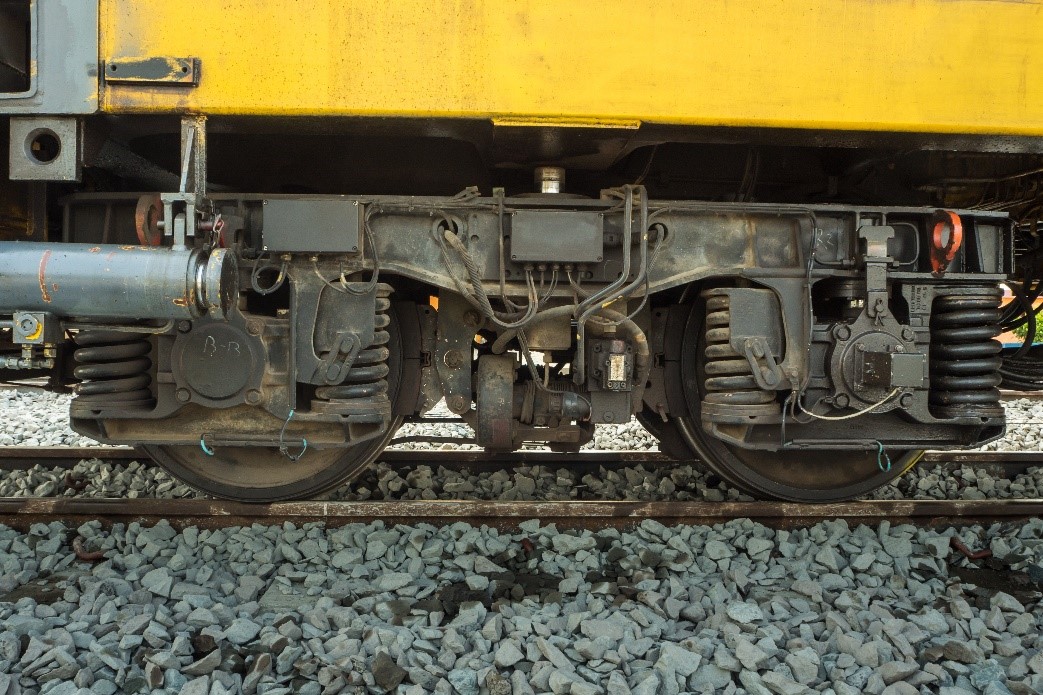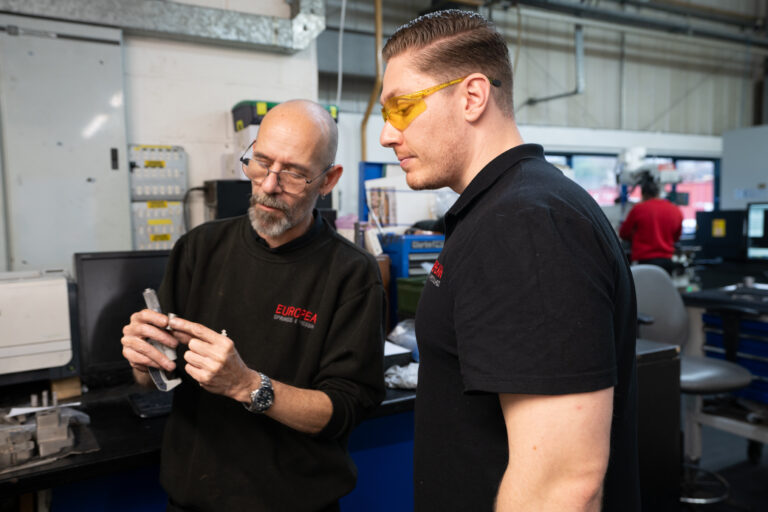We encounter springs every day, sometimes without even knowing it. Because of this, you may not have noticed that they are a vital factor in trains and their functionality. The hydraulics system makes the trains run the way they do, and, without them, the smooth and comfortable ride wouldn’t be as we experience today. All of the weight of the train is sustained by a hydraulic system, making the movement almost slide with insignificant friction and abrasion.
We have come a long way in engineering terms in the rail industry, from steam trains to spring-reliant electric systems. But how does the suspension system work?
UK Railways
In the UK, most trains use bogies to carry and guide the vehicle along the tracks. Designing a bogie suspension system is a complex matter, which has been developed and improved over the years. Early on, it was recognised that the space between the body of the train and the wheel needed a ‘cushion’ in order to reduce vibrations felt inside the carriages. This has usually consisted of a leaf steel spring mounted on the axles. Over time, this has progressed into a bogie system with a more sophisticated suspension.

Primary Suspension System
There are two main types of suspension systems used in trains, both of which are involved with springs. The primary suspension consists mainly of a normal spring damper system which supports the structural suspension of the carriage and entire train. These damper systems are present in every bogie existing between the axle box and the bogie.
Bogie Structure
The bogie of a train is the undercarriage and usually has four to six wheels pivoted beneath the end of the vehicle. It is like a low truck or trolley underneath the train. The bogie is the generic way in which most railway vehicles work. It is divided into the frame, the bolster, the pivot pin, the wheel assembly, roller bearing, the brake beams, brake block, brake levers and brake cylinders; all vital parts to the structure of the bogie.
Dashpot Arrangement
The primary suspension component in a bogie is through a dashpot arrangement, which comprises of a cylinder piston. The lower spring seat acts as a cylinder and the axle box guide acts as a piston. The bogie bolster, or support, is the central section of the area; this carries most of the weight of the coach. The bogie pivots around using the pin which is centred and uses parts of the secondary suspension system, typically coil springs and a spring plank.
Dashpots can also be found in door closers to prevent them from slamming shut, in shock absorbers in cars’ hydraulic cylinders, in aircraft carrier decks, in relays, in electrical switch gears and so much more.
Springs in The Bogie
Whilst passengers don’t notice the bogie, this is still a very important element of safe railway operations, as it supports the railcar body, allows the train to run smoothly both on straight and on curved tracks, ensuring a comfortable journey, amongst other things.
The primary springs link the axlebox to the bogie frame; a secondary spring system connects this frame to the train. Typically, the types of springs found in bogies are steel leaf or coil designs, and you can also find rubber and air springs. They reduce forces and vibrations and help to prevent derailment.
The primary suspension is between the axle box and the bogie and consists of springs and dampers. It is an invariable necessity for all classes of rolling stock, including wagons. Different classes of carriages are provided with different bogie designs; however, they can differ from the eight springs per bogie (classed on each bogie being a three-wheel set). They are all provided with either inner springs or balanced with inner springs along with friction dampers.

Secondary Suspension System
The secondary suspension connects the body of the car with the bogie and aids comfort of passengers by isolating the vehicle from vibrations transmitted from the track. Commonly part of secondary suspensions, the air spring works to reduce lower frequency range accelerations in the body of the train. The role of the secondary suspension is mainly to act as a pneumatic suspension and is even used in freight trains.
Bolster Support
The arrangement of this secondary suspension system is through the bolster springs. The bogie bolster or support is not structurally attached to the bogie frame; however, it is attached through the anchor link (the tubular structure with cylindrical ends). The anchor link is fixed to the bolster and the bogie frame with the assistance of brackets. Both ends of the anchor link then act as a hinge which allows movement of the bolster when the train is in action.
Lower Spring Beam
Lower spring beams support the bolster springs. This lower spring beam is a structure made up of steel plates and the location is marked by circular grooves in the centre of the support. The lower spring beam is also a free-floating structure but is attached to the bogie frame by the outside, with the assistance of a steel hanger. These are traditionally called the BSS Hanger (Bogie Secondary Suspension Hanger).
Equalising Stay Rod
The inside section of the lower spring beam is connected to the bogie bolster but gets a little help from an equalising stay rod. This rod is Y shaped and made from steel sheets and tubes. It is also hinged from both ends with the lower spring beam, along with the bogie bolster. They are all connected by a pin. The use of springs in railway and train systems are vital for both the smoothness and functionality of the train and the comfort of passengers.
As experienced spring manufacturers UK, we understand the importance of springs in all types of industries and pride ourselves on supplying the highest quality products for them. We specialise as compression spring manufacturers and tension spring manufacturers as well as other spring types. Browse our vast spring catalogue to see what we can offer you or, should you prefer, get in touch with us and we’ll create a custom spring tailored to the specific requirements of your project.







